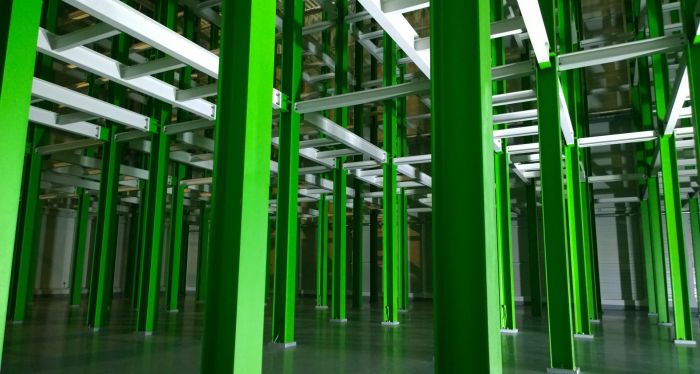How the cloud and virtualisation are driving Green IT
Views, News & more

The cloud-based trends that are driving Green IT
The internet has already been an incredible tool for efficiency within our lifetimes. Whole industries have sprung up and died, forms of distribution and communication revolutionised, and - for the laziest of us - the opportunity to work from home in your pants if the opportunity arises.
The carbon impact of the online world seems like a strange drawback to concentrate on, but it is estimated that 3.5 billion users of the worldwide web generate a higher energy and carbon footprint in excess of that generated by air travel. According to a recent Greenpeace report, the energy footprint of the IT sector consumes 7 per cent of global stocks - a figure that is expected to rise in the coming years.
These surprising numbers have lead to today, when Green IT and the concept of sustainable computing is fast becoming a priority for organisations around the world.
How can IT be green?
There are two ways in which Green IT is changing businesses today: first, through reducing the environmental impact of an organisation’s IT function; second, by helping reduce an enterprise’s overall carbon footprint.
The tech giants have all responded to the worrying trends in online pollution, with Facebook, Apple and Google all pledging to take their data centers and IT operations “green” by 2012, joined by Microsoft and Amazon in 2014.
Pledges alone will not change anything, however, with many companies taking their own, wildly differing steps to achieve a green future.
A survey carried out by Global Data attempted to show which specific technologies companies are employing and found that server virtualisation was the number one choice, with 75 per cent of respondents already deploying the technology to divide one physical server into multiple isolated virtual environments.
Virtualisation dominates the survey, indeed with network (66 per cent), storage (63 per cent) and desktop (61 per cent) virtualisation methods the most used. Respondents report that, thanks to the fewer servers needed to service the same number of customers, they use and waste less energy.
Green scaling
Interestingly, bottom of Global Data’s study was automation, a practice that although is a bit of an industry buzzword is yet to hit the mainstream. Automation software allows cloud-based infrastructure to provision, move and scale workloads and push existing data centers to their maximum capacity, again reducing the need for miles and miles of energy-sapping server stacks. Sources suggest that organisations are set to increase their investment into this area significantly in coming years, however.
Other efficiency improvements include a “pay-per-use” model for cloud services, which will encourage users to consume the processing power they need and nothing more. When combined with an increasingly “self-service” marketplace for SaaS and similar products, energy resources could be spent yet more efficiently.
Then there is the concept of “multitenancy”, which allows many different organisations (or business units at the same enterprise, in the case of private cloud services) to benefit from the same infrastructure. This allows demand and server use to flatten out over time and, when combined with automation, means massive efficiencies and economies of scale start to apply to energy use in data centers. Smart stuff.
Central to green plans
All of which leads into the concept of green datacenters, a solution facing the cloud computing and wider IT industry today. The movement refers to all sorts of improvements that can be made to the physical infrastructure a company maintains, including the use of renewable energy sources (including solar, wind and tidal electricity), design-for-environment policies which ensure only environmentally-friendly equipment is bought in the first place, and an emphasis on a sound end-of-life policy, prioritising the safe disposal of old kit.
All of which is leading to some slightly out-there - but exciting - innovations. Amazon Web Services claims it will have all of its datacenters powered by renewable energy sources by the end of 2017, for one, with 50 per cent of all electricity produced through a mix of solar and wind energy thanks to deals signed with solar farms in Virginia.
Microsoft, meanwhile, is experimenting with underwater datacenters to provide not only a cooler and more efficient for processors to operate in, but the potential for centers that power themselves using underwater turbines or tidal power.
If the big players are already riding the green wave, it’s easy to see how cloud computing could set a new green, environmentally-friendly agenda for the IT world.
https://cdn.kualo.com/website/Kualo_Environmental_Impact_Internet_2017.jpg
https://www.greenbiz.com/article/4-reasons-why-cloud-computing-also-green-solution
https://www.theverge.com/2016/2/1/10883866/microsoft-underwater-data-centers
Get in touch
020 7847 4510
We may process your personal information in order to send you information you request, measure and improve our marketing campaigns, and further our legitimate interests. For further details, see our privacy policy.
Contact us
-
- Head Office:
- hSo, 50 Leman Street, London, E1 8HQ
- Switchboard:
- 020 7847 4500
- Support (24x7):
- 0333 200 3337
- support@hso.co.uk
- Marketing & Sales:
- 020 7847 4510
- info@hso.co.uk

















